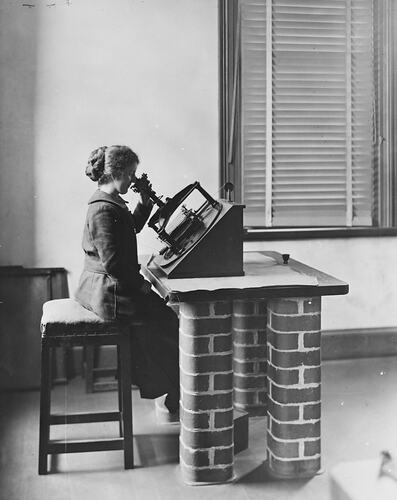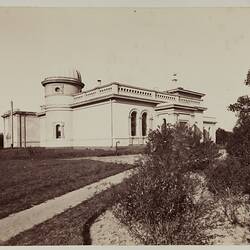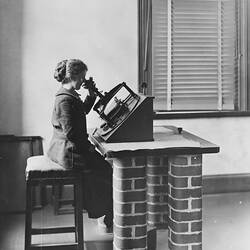By the 1880s the potential of using photography to map the entire sky was being discussed, and in 1887 an international conference was held in Paris to establish procedures for a cooperative international project involving 18 observatories. The plan was to make photographic charts of all stars down to the 14th magnitude (some 40 million stars) and catalogues of the positions of stars down to the 11th magnitude (some 2-3 million stars), based on accurate measurement of the photographs. Melbourne and Sydney Observatories and their colonial governments both agreed to participate in the Astrographic Project, with the Melbourne Observatory responsible for the zone from 65 degrees south declination to the south celestial pole.
It was expected that the results would provide a far better understanding of the universe. Changes in the magnitude or brightness of stars could be used to estimate their distance from the Earth (although stars obviously varied in size, the large numbers of stars in the project would enable this variable to be averaged out). The project would serve as a base line from which subsequent studies could reveal changes in the universe such as novas or the movement of stars relative to one another.
The project was the largest international scientific project undertaken in the 19th century. Government Astronomer Robert Ellery initially estimated that Melbourne's part of the project would cost about £4000 and take several years to complete, and in 1890 a specially designed telescope and camera were purchased and placed in a new building on the site.
But subsequent meetings of the project committee, dominated by the major European and North American observatories, made the project ever more complex. They increased the number of guide stars for each plate, increased the number of exposures to be taken of each part of the sky, and raised the level of accuracy required. Each observatory became responsible for measuring the stars on its own plates, rather than sending them to Paris for this time-consuming task. Ellery estimated that the Melbourne and Sydney Observatories had close to 1,500,000 stars to measure on their combined plates! The meridian observations of the guide stars would alone take up the time of two assistants for 12 years. All of this hit the Melbourne Observatory just as the severe economic depression of the 1890s was starting to bite, and Ellery was facing cuts in his budget and a reduction in his staff.
Ellery and his counterpart at Sydney, H.C. Russell, decided to pool their resources. With special government funds they set up a room at the Melbourne Observatory for the measuring of the Sydney and Melbourne plates, purchased and built special measuring machines which assisted with the task, and employed young women to undertake the tedious work. In employing young women Ellery was following a new trend in European and American observatories, where, he noted, 'it has been found that young women of ordinary intelligence can be quickly trained in the use of the micrometer, and do the measurements quickly and well.'
By 1911, over 20 years after the start of the project, Ellery reported that most of the work had been done. But the First World War and lack of funds further delayed the printing of the Melbourne astrographic catalogues, and the first of 8 volumes was not issued until 1926; only 3 had been published when the Observatory closed in 1944. The remaining volumes were published in the 1950s and 1960s with funds provided by the International Astronomical Union. Melbourne was not the only observatory to be overwhelmed. Twenty years into the project only Greenwich and Oxford Observatories had completed their part of the work; some were never to do so.
In the 1980s and 1990s the original data was made machine-readable. The resulting catalogue, AC 2000, is now widely used to compute stars' proper motions and to understand galactic structure and evolution. Work commenced in the 1890s continues to be relevant to modern astronomy.
References:
Meadows, A.J. (1975). Greenwich Observatory; Volume 2: Recent History (1836-1975), London: Taylor & Francis. Ch. 2.
Turner, H.H. (1912). The Great Star Map, London: John Murray.
Urban, Sean & Corbin, Thomas E. (1998). 'The Astrographic Catalogue: A Century of Work Pays Off', Sky & Telescope, June, pp.40-44.
More Information
-
Keywords
-
Authors
-
Article types





